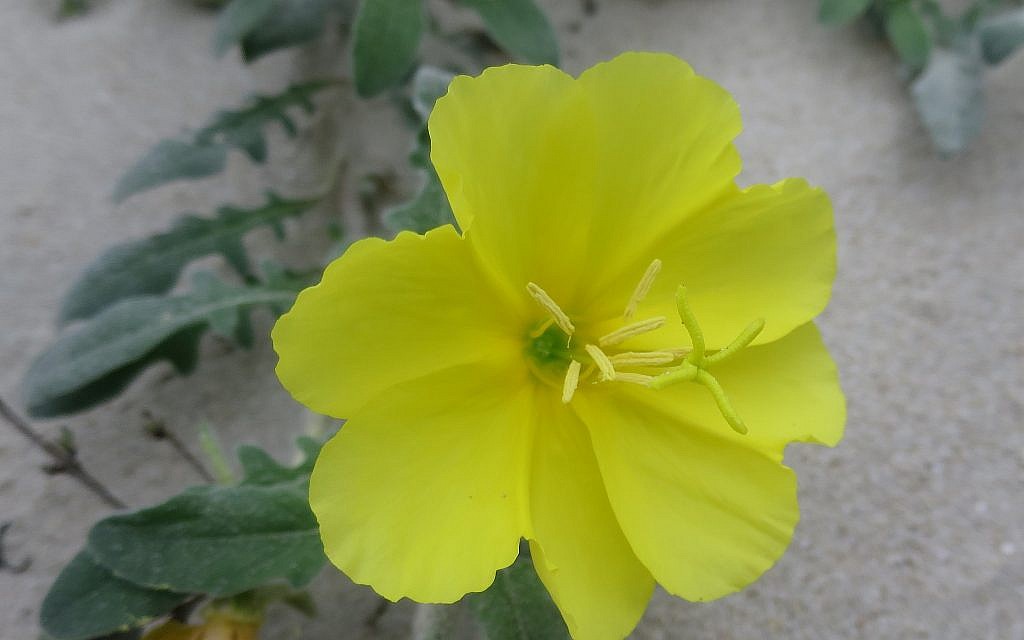Using petals as ears, the evening primrose sweetens its nectar in minutes when it hears sounds at the frequency of bees’ wing-beats

Israeli scientists at Tel Aviv University say they have found a flower that hears the approach of pollinating bees and hawk-moths and produces extra and sweeter nectar in response.
Using the evening primrose, or Oenothera drummondii, the scientists showed that the sound of a flying bee, as well as “synthetic sound-signals at similar frequencies,” induced the flowers to excrete sweeter nectar within three minutes.
The plants’ “ear” is simple: the flower petals themselves, which vibrate when sound waves at the frequency produced by pollinators’ wings pass by, serve as “the plant’s auditory sensory organ.”
The flowers did not respond to higher frequency sound.
“Our results document for the first time that plants can rapidly respond to pollinator sounds in an ecologically relevant way,” the scientists explain in their paper posted to the bioRxiv open access server on December 28. Papers published on the site are not peer-reviewed but do undergo basic screening.
The ability to hear the approaching pollinating insect can offer a huge advantage to a plant, the paper explains.
“The great majority (87.5%) of flowering plants rely on animal pollinators for reproduction,” the scientists note in the paper’s introduction. “In these plants, attracting pollinators can increase plant fitness and is achieved using signals such as color, odor, and shape, and by food rewards of nectar and pollen.”
However, offering such an “increased reward” — for example, producing extra or sweeter nectar — can be physiologically costly.
And it can rot: “standing crop of nectar is subject to degradation by microbes,” the scientists note. Oh, and it might also be “robbed” by ants.
If a plant can detect an approaching pollinator, however, it could release the better nectar only when an appropriate pollinator arrives, “in a way that would increase the probability of pollination and reproduction by the same or similar pollinators.”
To test this possible sense of hearing in the flowers, the scientists say they measured “petal vibration and nectar sugar concentration in response to sounds. We analyzed the effect of different sound frequencies, including both pollinator recordings and synthetic sounds at similar and different frequencies.”
The study’s results suggested plants may have evolved, and may still be evolving, to become better at hearing, primarily through the shapes of flowers.
It also suggests that human-made sounds could be negatively affecting plants’ ability to attract the appropriate pollinators by confusing their sound-detection and nectar-production systems.
As reported by The Times of Israel
